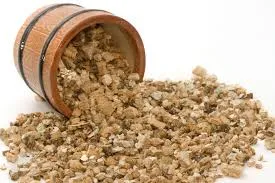Septemba . 29, 2024 05:39 Back to list
Premium Quality Powdered Activated Carbon for Diverse Applications and Environmental Solutions
High-Quality Powder Activated Carbon An Essential for Purification Processes
Activated carbon, particularly in its powdered form, plays a crucial role in various purification processes across industries. This high-quality material is renowned for its extraordinary ability to adsorb contaminants, making it an indispensable component in water treatment, air purification, and even food processing.
What is Powder Activated Carbon?
Powder activated carbon (PAC) is produced from carbon-rich materials such as coal, wood, or coconut shells. The production process involves carbonization and activation, where the raw material is heated in an inert atmosphere to develop a porous structure. The activation process further enhances the surface area, significantly increasing the material's adsorption capacity. Due to this unique structure, high-quality powder activated carbon can have a surface area exceeding 1000 m²/g, facilitating its effectiveness in capturing a wide array of pollutants.
Applications of High-Quality Powder Activated Carbon
1. Water Treatment One of the most significant applications of PAC is in municipal and industrial water treatment facilities. It effectively removes organic compounds, chlorine, and other pollutants from water, improving its quality and making it safe for consumption. Its ability to reduce odors and tastes makes it particularly valuable in maintaining the palatability of drinking water.
high quality powder activated carbon

2. Air Purification In air quality control, PAC serves as a critical component in filters designed to reduce volatile organic compounds (VOCs), odors, and other airborne toxins. Many industries, including manufacturing and waste management, utilize PAC in their ventilation systems to ensure a safe and breathable environment.
3. Food Industry High-quality powder activated carbon is also employed in the food industry, especially in sugar refining and juice processing. It helps in decolorizing products and removing impurities to enhance the quality and shelf-life of food items.
Why Choose High-Quality PAC?
The efficiency of powdered activated carbon heavily relies on its quality. High-quality PAC not only has a larger surface area and greater pore volume but also exhibits a higher adsorption rate. This means it can quickly and effectively capture contaminants, reducing the need for frequent replacements and lowering operational costs. Additionally, using high-quality PAC ensures compliance with environmental regulations and enhances sustainability efforts.
Conclusion
In summary, high-quality powder activated carbon is a versatile and essential material in various purification processes. Its impressive adsorption properties make it invaluable for providing clean water, breathable air, and safe food products. As industries continue to prioritize sustainability and environmental responsibility, the demand for high-quality PAC is expected to grow, solidifying its role as a cornerstone in modern purification technologies.
-
Top Tundish Covering Agent Exporters – Reliable Manufacturer & Supplier
NewsJul.28,2025
-
Environmentally Friendly Granule Covering Agent for Safe, Eco Solutions
NewsJul.27,2025
-
Premium Thermal Insulation Cups Materials Exporters & Suppliers
NewsJul.26,2025
-
High-Performance Tundish Dry Vibrator for Steel Casting
NewsJul.25,2025
-
Top Carbon Petroleum Coke Exporters – Reliable Manufacturer & Supplier
NewsJul.24,2025
-
Environmentally Friendly Granule Covering Agent for Sustainable Solutions
NewsJul.23,2025
